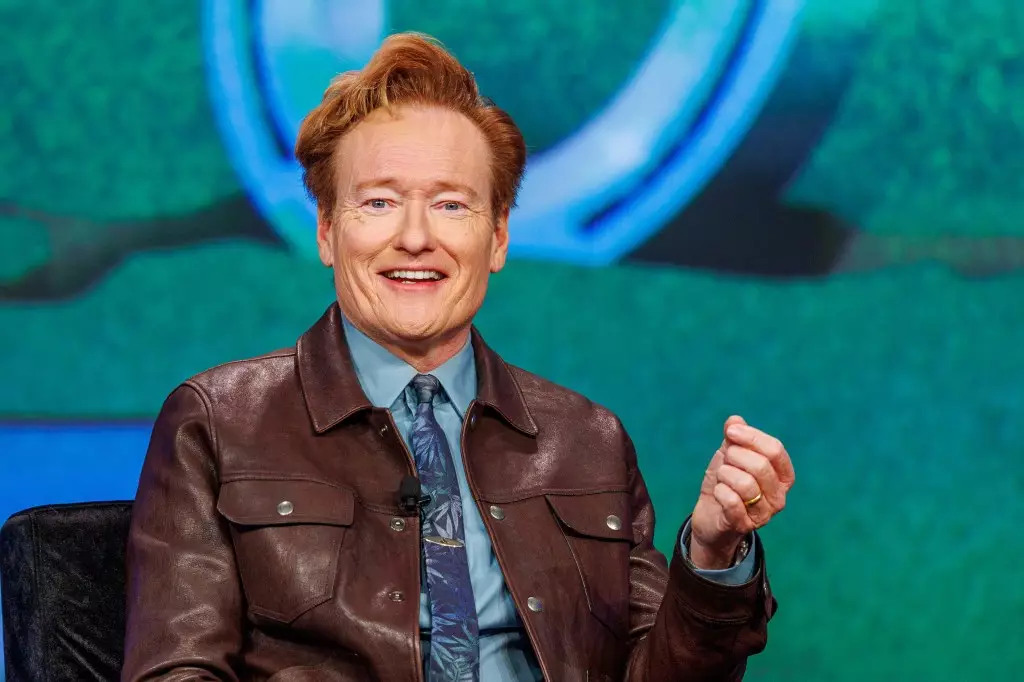In an age when nostalgia and innovation collide, the announcement of Conan O’Brien voicing a character in Toy Story 5 has sparked a delightful blend of excitement and bewilderment. O’Brien, famed for his unique brand of humor and late-night antics, is set to take on the role of Smarty Pants, a character that seemingly embodies his animated personality. As we navigate this unconventional casting choice, we must recognize the brilliance in the strategy behind O’Brien’s integration into a legendary franchise that has meant so much to audiences over the years.
O’Brien’s infectious enthusiasm is undeniable. When he expressed disbelief on Instagram about landing a role in such an iconic series, it was a humorous reminder that, despite his success, he remains a fan at heart. Comments on his initial aspirations to portray Woody or Buzz Lightyear only amplify his playful nature; it shows O’Brien’s understanding of the dynamics that play out in Hollywood. In claiming Smarty Pants as the character he’s meant to embody, he underlines a fundamental truth in entertainment. Sometimes, the best role isn’t the one that initially jumps off the page but instead one that compels the actor to step outside conventional expectations.
The Evolution of Toy Story: Embracing Modernity
Toy Story 5 promises to be a pivotal installment, particularly as it tackles the evolving relationship children have with technology. This iteration will not only resonate with young audiences but may also provoke discussion among parents about the immersive digital worlds their children inhabit. By introducing electronic elements into the storyline, the film aims to shine a light on contemporary childhood experiences, though it risks diluting the core themes of friendship and loyalty that define the series.
The fact that new characters like Smarty Pants will join the beloved ensemble speaks volumes about the intention behind the narrative. Will this film celebrate technology and its impact on childhood, or will it critique the ways in which screens have invaded our playtime? O’Brien’s character could very well serve as a metaphor for the relationship between old and new—where nostalgia and modern gadgetry coexist. Thus, the question rests on how successfully Toy Story 5 navigates the balance between homage to its roots and relevance to today’s audience.
Comedy Meets Heart: An Uncertain Future
The addition of O’Brien, coupled with a slate of new talent joining the voice cast, brings a refreshing yet precarious energy to Toy Story 5. Critics and fans alike must ponder if this film can maintain the emotional depth that has come to characterize its predecessors. Andrew Stanton’s pedigree as an Oscar-winning writer and director suggests a high bar; his previous works such as WALL-E and Finding Nemo delivered profound emotional experiences wrapped in vibrant animation. However, with public opinion swinging humorously toward skepticism about the necessity of another sequel, the challenge remains—will Toy Story 5 honor its legacy or falter under the weight of expectations?
While the franchise depends on comedic elements, the skillful blending of humor and heart is what ultimately resonates with viewers. O’Brien’s charm could infuse new life into the series, but it equally raises concerns about the direction in which the humor will steer the narrative. O’Brien’s past shows he can dive deep into absurdity, but will that align with the emotional gravitas that Toy Story has successfully wielded in the past? His comedic genius, coupled with the film’s themes of identity and adaptation, has the potential to resonate with contemporary audiences while still evoking familiar feelings of nostalgia.
A Call to Action: The Need for Balance in Entertainment
As this new chapter unfolds, there’s imperative discussion needed about the evolution of animated films as they chase broader audiences in an ever-changing digital landscape. In this pursuit, creators like Stanton must remember that heart has always been at the center of Pixar’s storytelling prowess. This blend of humor with poignant moments could either uplift or hinder the narrative; only time will tell if the spirit of Toy Story can indeed survive the changing times, or if it finds itself lost in the digital maze.
As Toy Story 5 gears up for its June 2026 release, we must remain engaged in the conversation about where storytelling should head. It is not merely O’Brien’s casting that stirs our excitement—it’s what this decision represents in a world saturating with technology. As we consider the balance of our digital lives with traditional storytelling, we must cheer for innovation that doesn’t lose sight of emotional authenticity. The audience is ready; the creators need to respond.


Leave a Reply